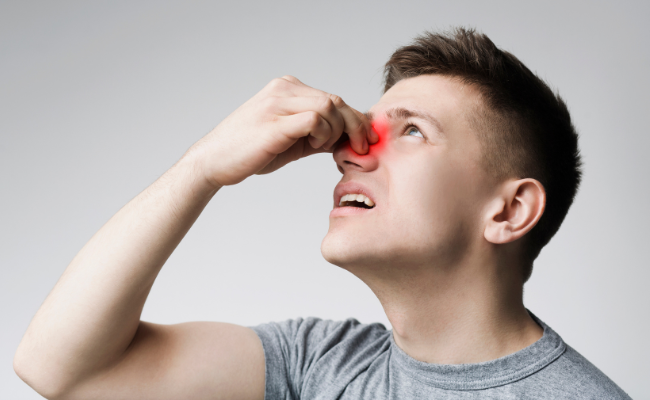How to Treat Turbinate Hypertrophy?
- October 05, 2023
- No Comments

What is Turbinate Hypertrophy?
Turbinate hypertrophy refers to the enlargement of the nasal turbinates, also known as nasal conchae, which are slender passages inside the nose responsible for filtering and humidifying inhaled air. When these structures become excessively swollen, it can lead to nasal congestion, difficulty breathing, and other related symptoms. This enlargement obstructs normal airflow, resulting in issues such as breathing difficulties, recurrent infections, and nosebleeds.
Why Does Turbinate Hypertrophy Occur?
- Chronic Rhinitis: Conditions like chronic rhinitis, which cause inflammation of the nasal passages, can contribute to turbinate hypertrophy.
- Allergies: Allergic reactions to environmental factors such as pollen, dust, or pet dander can lead to nasal inflammation and turbinate enlargement.
- Infections: Recurrent or chronic infections of the nasal passages may result in persistent turbinate hypertrophy.
How to Treat Turbinate Hypertrophy?
- Nasal Decongestants: Short-term use of nasal decongestant sprays can provide relief by reducing swelling. However, prolonged use can lead to rebound congestion and should be avoided.
- Antihistamines: Antihistamines can help manage symptoms associated with allergic causes of turbinate hypertrophy. They work by blocking the effects of histamine, a chemical released during allergic reactions.
- Nasal Steroid Sprays: Nasal steroid sprays are effective in reducing inflammation and can be used for both allergic and non-allergic causes of turbinate hypertrophy.
- Septoplasty: In cases where turbinate hypertrophy is associated with a deviated septum, septoplasty may be recommended. This surgical procedure aims to straighten the nasal septum and address underlying issues.
- Turbinate Reduction Surgery: Turbinate reduction surgery, also known as turbinate coblation or turbinate laser reduction, involves shrinking or removing a portion of the swollen turbinates to improve airflow.
Treatment Solutions for Turbinate Hypertrophy:
- Identify and Address Underlying Causes: Determining the underlying cause of turbinate hypertrophy is crucial for effective treatment. Whether it's allergies, infections, or chronic rhinitis, addressing the root cause is key.
- Avoid Allergens: For individuals with allergic triggers, avoiding allergens or using protective measures such as air purifiers can help prevent exacerbation of turbinate hypertrophy.
- Maintain Nasal Hygiene: Regular nasal hygiene practices, such as saline nasal irrigation, can help keep the nasal passages clean and reduce inflammation.
- Consultation with Specialists: Seeking consultation with an ear, nose, and throat (ENT) specialist is essential for a comprehensive evaluation and personalized treatment plan.
Benefits of Treating Turbinate Hypertrophy:
- Improved Breathing: Treating turbinate hypertrophy can result in improved nasal airflow and breathing, reducing the sensation of congestion.
- Reduced Nasal Symptoms: Addressing the underlying causes and treating turbinate hypertrophy can lead to a reduction in nasal symptoms, such as congestion, postnasal drip, and facial pressure.
- Enhanced Quality of Life: Improved nasal function and reduced symptoms contribute to an enhanced overall quality of life for individuals with turbinate hypertrophy.
- Prevention of Complications: Timely and appropriate treatment can prevent complications such as recurrent sinus infections, ear infections, and sleep disturbances associated with turbinate hypertrophy.
- Surgical Options for Long-Term Relief: In cases where conservative measures are insufficient, surgical options like turbinate reduction surgery can provide long-term relief and improved nasal function.
Comments (0)